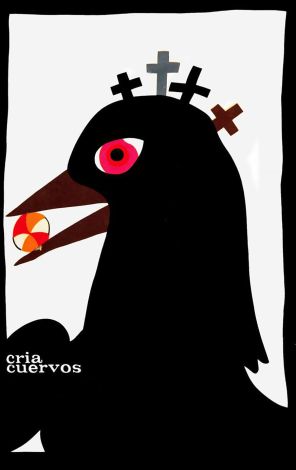Ranked among Europe's elite filmmakers, Carlos Saura had his greatest impact in the late '60s and early '70s when his often politically charged films revitalized Spanish cinema. Like his mentor Luis Buñuel, Saura freely blends reality with the macabre and an often grotesque surrealism to create worlds in which reality is subjective. Saura's most powerful films came during the last years of Franco's regime; while he still made important films after the dictator's death in 1975, many critics regard them as lacking the potency and lasting appeal of the earlier works.
Saura was born the second of four children in Huesca, Spain. His father was a lawyer, his mother a pianist, and his brother, Antonio, grew up to become a noted abstract expressionist painter. In 1935, Saura's family weathered the Spanish Civil War in Madrid. The war had a tremendous impact on Saura, and snippets of his vivid, often terrifying memories would later appear in his films. As a young man, Saura briefly studied engineering but at age 18 left school to become a professional freelance photographer. Specializing in photographing dancers and musicians, Saura made a name for himself and even staged two one-man exhibitions, the second of which featured abstract photos inspired by Saura's brother, Antonio, who later suggested Saura study motion pictures.
While attending Madrid's Instituto de Investigaciones y Experiencas Cinematográficas (now known as the Escuela Oficial de Cinematografía), Saura and his peers were greatly influenced by Italian Neorealism, as evidenced by Saura's graduation short, La Tarde del Domingo/Sunday Afternoon (1957). Saura became a professor and taught film direction at the Escuela Oficial until 1963. In 1958, Saura released his color documentary Cuenca, followed by his debut fictional feature Las Golfos, which, though completed in 1959, was censored until the early '60s. The story of street hoodlums striving to escape their poverty by becoming bullfighters, it utilized a non-professional cast and was the first Spanish film shot entirely on location. Three years later, Saura made his second feature, Llanto por un Bandido/Lament for a Bandit (1964), a Spanish-French co-production about a famous Andalusian bandit. Though Saura wanted it to be a realistic account of the robber's life, the producers insisted on making it a swashbuckling epic. The resulting compromise was not only censored, it was a box-office failure and led Saura to eschew creative input from external sources on future projects.
Recognizing Saura's talent and vision, producer Elías Querejeta respected the director's need for absolute creative control and produced many of Saura's subsequent films, beginning with La Caza/The Hunt (1965), a powerful psychological thriller which commented on the societal effects of Franco's ideology. By the mid-'60s, Saura started organizing his longtime production team, including cinematographer Luis Caudrado, film editor Pablo G. del Amo, and American actress Geraldine Chaplin, with whom he would have a long-term personal relationship and a child. La Caza earned high praise at several prominent international film festivals, including the Berlin Film Festival where it received the prestigious Silver Bear award. Saura won another Silver Bear in 1968 with Peppermint Frappé, a dark exploration of how church-and state-enforced societal, sexual, and psychological repression can lead good people to monstrous deeds. While Saura's criticism of Franco was initially fairly subtle, his views became more obvious with time, but the more censors trimmed Saura's work, the more outspoken he became. The Spanish government was more tolerant of Saura than they might otherwise have been (he was never banned from filmmaking) because his films earned Spanish cinema so much international acclaim at festivals. However, on one occasion, the Ministry of Information released a particularly inflammatory Saura film, El Jardín de las Delicias/The Garden of Delights (1970), which castigated the government, the church, and the sexually repressed Spanish society, because they considered it too boring to pose a threat. The ministers' opinions notwithstanding, the story of a governess who is assaulted by three brothers (each representing the aforementioned problems) had particular impact for non-Spanish audiences.
Franco died in 1975, and with the fall of his regime came a new freedom in expression. Still, Saura remained haunted by his childhood experiences and the dark aspects of Spain's 20th century history. From this point, his films have alternated between those which focus upon sociopolitical issues and less polemic "art house" films. Saura gained particular notice in the 1980s for his "flamenco trilogy" made in conjunction with noted dancer and choreographer Antonio Gades: Boda de Sangre/Blood Wedding (1981), an adaptation of Carmen (1983), and El Amor Brujo/A Love Bewitched (1986). In 1995, Saura would again return to the world of Spain's national dance with his compelling documentary Flamenco. Three years later, Saura would explore Argentina's national dance with his docudrama Tango (1998). Billed as Argentina's most expensive film and filmed utilizing specially designed equipment, Tango harkens back to Saura's earlier works with its subtle emphasis on the dark historical and political implications of the dancers' complex, passionate movements.


